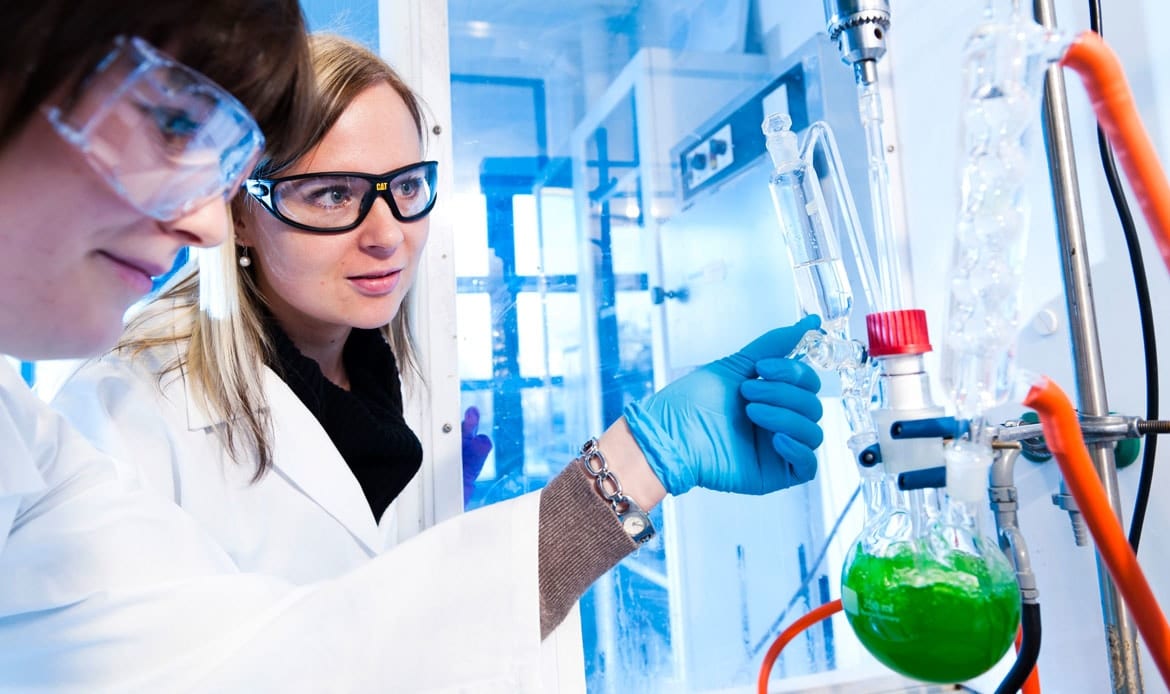ISO/IEC 17025:2017
General requirements for the competence of testing and calibration laboratories
What is ISO17025?
ISO 17025 is an International Standard (published by the International Organization for Standardization) that specifies the general requirements for the competence to carry out tests and/or calibrations. There are 15 management requirements and 10 technical requirements. These requirements outline what a laboratory must do to become accredited.

What is it and Why is it Important?
ISO/IEC 17025 is a recently introduced standard from the International Organization for Standardization and the International Electrotechnical Commission. “ISO17025”, as it has become known, replaces a number of older standards and guides including ISO/IEC.
It is a global standard for the technical competence of calibration and testing laboratories. In addition to establishing the quality system, documentation, and personnel requirements.
ISO17025 is the single most important metrology standard for test and measurement products. Nearly all national standards bodies and accreditation agencies around the world have adopted it.
A growing number of companies require it and some industries have even incorporated it into sector-specific standards technical requirements. These requirements outline what a laboratory must do to become accredited.
What does ISO 17025 apply to?
ISO 17025 applies to all organizations performing tests and/or calibrations. It applies to all laboratories regardless of the number of personnel or the extent of the scope of testing and/or calibration activities covered by this International Standard
How does a laboratory get accredited to ISO17025?
A laboratory must document a quality management system. A documented quality manual is a basic requirement on the road to laboratory accreditation. In addition, quality management procedures must be established for how the system is maintained. Once the system is documented it must be implemented in the laboratory.
It will also accompany the laboratories application for accreditation. The implementation period will require several months to establish the records that an accreditation body will review at an accreditation audit. Finally, the laboratory undergoes the ISO17025 assessment by an accreditation body that is certified to perform laboratory accreditation
ISO 17025 Accreditation Requirements
1-Management Requirements
- Organization
- Quality system
- Document control
- Review of requests, tenders, and contracts
- Subcontracting of tests and calibrations
- Purchasing services and supplies
- Service to client.
- Complaints.
- Control of nonconforming testing and/or calibration work.
- Corrective action.
- Preventive action.
- Control of records.
- Internal audits.
- Management reviews.
2-Technical Requirements
- General
- Personnel – Accommodation and environmental conditions
- Test and calibration methods and method validation
- Equipment
- Measurement traceability
- Sampling
- Handling of test and calibration items
- Assuring the quality of test and calibration results
- Reporting the results
3.1 Organization and Management
This section of 17025 stresses the fact that “the lab can be held legally responsible.” The lab must be organized so that it can carry out its work at permanent or temporary facilities. If the lab is part of a larger organization, the responsibilities must be carefully divided to avoid conflicts of interest.
The lab must have management and technical personnel with the authority and resources needed to do the testing. The lab personnel must be free from any undue pressures that could adversely affect the work. The lab must have policies to protect the clients’ confidential information and they must have an organizational chart that specifies the interrelationships of all personnel. The lab must also have a technical manager and a quality manager
4.0 Quality System:
The lab management staff must establish a quality system and document the lab’s pertinent policies and procedures. The quality system will be recorded in a manual that includes a policy statement by the chief executive.
4.1 Document Control:
The lab must have procedures to control all documents that are part of its quality documentation. A master list of issued quality system documents must be kept by the lab. Changes to documents shall be reviewed and approved by the same authority performing the original review
4.2 Review of Report, Tenders, or Contracts:
The lab shall establish and maintain procedures for the review of requests, tenders, or contracts.
4.3 Subcontracting of Tests and Calibrations:
Work may be subcontracted to competent subcontractors for special tests requiring extra technical expertise.
4.4 Purchasing of Services and Supplies:
The lab shall use only such services and supplies that are at a level of quality sufficient to create reliable test results
4.8 Corrective Action:
The lab shall have a policy for implementing corrective action when departures from technical procedures have been identified.
4.9 Preventive Action:
Opportunities for needed improvement shall be identified and the necessary action plans should be developed and implemented.
4.10 Records:
The lab shall have procedures for quality and technical records including security and confidence measures
4.11 Internal Audits:
The lab shall periodically (in accordance with a predetermined schedule) perform internal audits of its activities.
4.12 Management Reviews:
The executive management of the laboratory shall periodically review the lab’s operations to ensure continuing suitability and effectiveness.
5.0 Technical Requirements:
Method validation and measurement uncertainty are stressed more heavily in this standard. Seven technical factors (5.2 – 5.8) contribute to the total conformity of measurement of the laboratory.
5.1 Personnel:
The technical personnel must be qualified for each specific test on the basis of appropriate training, education, experience, or demonstrated skills. The lab shall maintain current job descriptions for all personnel
5.2 Accommodations and Environmental Conditions:
Lab facilities shall allow the current performance of tests by appropriate separation of emission and immunity test areas.
5.3 Test Methods:
The lab shall use appropriate test procedures including estimation of measurement uncertainty. The lab shall have instructions on the use and operation of all relevant test equipment.
5.4 Equipment:
The lab shall have all necessary test equipment for performing the EMC tests in its scope of accreditation. Records shall be maintained on lab equipment, especially the calibration histories.
5.5 Measurement Traceability:
All equipment shall be calibrated before being put into service. The calibration must be traceable to the Systems International (SI) units of measurement. Calibration certificates shall include measurement uncertainty.
5.6 Sampling:
When a lab does sampling, it must have a plan and procedure for the sampling process.
5.7 Handling and Transportation for Test Items:
The lab shall have procedures for transporting and handling test items including procedures for marking and identifying the test items.
5.8 Assuring the Quality of Test Results:
The lab shall assure the quality of results by monitoring test results using statistical techniques and other established methods.
5.9 Reporting the Results:
The test results shall be reported accurately, clearly, unambiguously, and objectively in the form of a test report or a test certificate.
6. ISO 17025 Success Factors:
Research into what makes an ISO 17025 implementation successful has revealed 11 Critical Success Factors. They are, in order of importance:
6.1 Top management leadership & commitment.
6.2 A simple, comprehensive implementation plan.
6.3 Training & support for everyone involved or affected by the implementation project.
6.4 Buy-in and voluntary support & commitment from a critical mass of people.
6.5 Early successes that clearly prove that ISO 17025 will benefit customers, suppliers, management, and especially workers.
6.6 Adequate resources and time to achieve all that needs to be done.
6.7 Rapid and effective communication, feedback, and recognition on efforts made results achieved, and work to be done.
6.8 Expert, pre-experienced advice, coaching, cheerleading, pre-warnings, and technical expertise on ISO 17025 implementation.
6.9 Auditing, training, and remedial assistance to achieve consistent compliance to minimum requirements
6.10 Dress-rehearsal audit, final fixes, then formal Registration Audit by Accredited Registrar.
6.11 Continuous assessment, improvement, and re-registration of systems.
How Can “Aisc Group” Help?
Our Team offers a variety of Consulting Services and Solutions.
We understand that each organization or person is unique. Our Solutions are comprehensive and will be customized to meet your specific needs.
- Provides a well-planned and stage-by-stage audit program.
- A sound, coherent and non-disruptive assessment.
- We have an enviable record of customer satisfaction.

